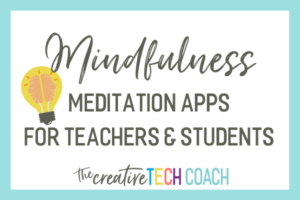Like Piaget, I believe that as children develop, they construct meaning and learning through experiences and observations (Slavin, 2012). As an educator I have always identified with Piaget’s theory and constructivist approaches. Constructivism is a popular theoretical framework of education that assumes that knowledge is constructed through learners’ experiences rather than directly from the environment and students are active participants in their own learning (Slavin, 2012). Knowlton (2002) explains it well:
Substantive learning only occurs when [teachers] engage students in learning tasks that are indicative of activities that they will encounter beyond the walls of the classroom. Students must be active in their academic pursuits and create a personal view of the world. Passive learning that only requires students to quietly sit in rows of desks absorbing a [teacher’s] words is a waste of valuable educational time. (p. 40)
Constructivist approaches also include authentic assessment, teaching in context, and active learning (VanBrummelen, 2009).
Constructivism easily lends itself to distance learning because students have a huge amount of responsibility in their own learning. Instead of sitting passively in their desks (Knowlton, 2002) listening to the teacher lecture, students have the internet at their disposal to help them in the acquisition of their knowledge. Even young students can easily use mobile learning resources as they construct knowledge.
On the other hand, distance learning based on constructivist theories could prove less effective for young students that aren’t motivated enough to take responsibility for their own learning. Simonson, Smaldino, Albright, and Zvacek (2012) emphasize the importance of motivation and point out that “intrinsically motivated learners” or students who have high expectations for themselves tend to succeed more at distance learning than students who are not intrinsically motivated.
With these thoughts in mind, one could design a distance learning program that employs constructivist approaches, while providing supports and scaffolds for students that may lack motivation or who are too young to be held totally responsible for their own education. One great example is Connections Academy, which requires a learning coach for young student enrolled in their program (Connections Education, LLC, 2015).
References
Connections Education, LLC. (2015). Connections Academy: Parent responsibilities [Webpage].
Retrieved from: http://www.connectionsacademy.com/online-school/parents/involvement
Knowlton, D. S. (2002). A constructivist pedagogue’s personal narrative of integrating faith
with learning: epistemological and pedagogical challenges. Journal of Research on Christian Education, 11(1), 33-57.
Simonson, M., Smaldino, S., Albright, M., & Zvacek, S. (2012). Teaching and learning at a distance:
Foundations of distance education. (5th ed.) Boston, MA: Allyn & Bacon.
Slavin, R. (2012). Educational psychology: Theory and practice (10th ed.). Boston, MA: Pearson.
Van Brummelen, H. (2009). Walking with God in the classroom: Christian approaches to
teaching and learning (3rded.). Colorado Springs, CO: Purposeful Design Publications.




7 Responses
Wow Ashley you came out the gate running with your response. I also like the constructivist approaches to distance learning. I chose to do the Col because I am fascinated with Inquiry learning. I often link the constructivist approach to inquiry learning because they both allow students to learn from discovery. Discovery learning is becoming more a part of distance learning (2015, May 21) retrieved from http://hea-www.harvard.edu/ECT/Inquiry/inquiry1text.html. In addition, the constructivist approach to distance learning is student centered. Students have more control over their own learning. Just as you mentioned the constructivist approach to distance learning utilized authentic assessment. I like authentic assessment because it is more accurate than traditional assessment. Along with this students’ strengths and what they learn are the focal point of authentic assessment (Chiappetta & Koballa, 2010). Some online courses today are utilizing constructivism in distance learning probably unintentionally. There are some online courses that construct students learning by having them create and investigate a question, plan an investigation, collect information, analyze that information and assess the student’s learning with authentic assessment. In most of these online courses students receive a great deal of encouragement from instructors as they guide their own learning and construct meaning. Schooloogy which is used in my county provide this type of online courses for students that are unmotivated in the traditional classroom. Constructivism approach to long distance learning can better prepare students for the workforce. Students obtain critical thinking in order to solve problems in their lives logically. Such skills create a path of success for the online learner and for students in an incredibly competitive global marketplace (Chiappetta and Kobolla, 2010). I love the idea that you made a connection to life outside of the classroom with the constructivism approach to distance learning. You did a wonderful job with your response and your compassion for constructivism and distance learning soared throughout your response.
Chiappetta, E. L., & Koballa, T. R. (2010). Science instruction in the middle and secondary schools: Developing fundamental knowledge and skills (7th ed.). Boston: Allyn & Bacon
(n.d.). Retrieved May 21, 2015, from http://hea-www.harvard.edu/ECT/Inquiry/inquiry1text.html
Excellent work on this post, Ashley! Now – to challenge you, google George Siemens' Connectivism theory. Let me know what you think in light of constructivism 🙂
Hi Ashley. I agree with the idea of constructivism theory as applied to young online students. A dedicated work ethic is defiantly needed for any student to be successful with online learning. I also favor constructivism in problem based-learning as student assessment is revealed in real-time as students apply research and analyze to solve problems.
Ashley,
I agree that constructivism plays a big part in distance learning as well as in the traditional setting. I feel that it is very important for one to take charge of their own education. A teacher can tell you the answers but without your taking the initiative to learn then you are not really gaining the needed knowledge in which to help one be successful within the career field. With the constructivism theory most people like to be in charge and take control of what they learn.
Thank you for your post on constructivist theory Ashley:
I choose to discuss constructivist theory within distance education. The key component for any educator using the constructivist theory is a well-constructed design. According to Vrasidas (2012) when any educator constructs an ingenious and effective comprehensive learning model the performance is ultimately as effective as a seated course. There are many theories with benefit and challenges, however, within the various theories the educator must collaborate with experts to ensure the curriculum and instruction are effective, engaging, allows learner modifications, is rigorous, and relevant within the learning infrastructure.
Reference
Vrasidas, C. (2012). Constructivism versus objectivism: Implications for interaction, course design, and
evaluation in distance education. International Journal of Educational Telecommunications 7,
http://vrasidas.intercol.edu/continuum.pdf 1-17.
Distance learning requires a structure different from the traditional classroom setting and that is an important part of the Constructivist theory. However I believe it is also a large part of a regular classroom environment as well. Structure is always a critical component of education as without it how will an educator know what the end goal is. True distance learning is a little more challenging and an instructor must incorporate concepts to engage and enhance learning in the non-traditional environment by applying the constructivist theory and opportunities for interaction between the groups the instructor can achieve and provide a challenging learning environment. When learners are allowed to create objectives this allows the instructor to better understand how each student learns (Teaching with the Constructivist Learning Theory).
Reference:
Teaching with the Constructivist Learning Theory. (n.d.). Retrieved from https://www.nde-ed.org/TeachingResources/ClassroomTips/Constructivist%20_
I actually had previously downloaded the Kop & Hill (2008) article for a previous class. I didn't use it as a reference, but saved it just in case. There seems to be some debate about whether Connectivism is actually a learning theory or not (Kop & Hill, 2008). However, Duke, Harper, and Johnston (2013) assert that connectivism is a form of social learning. Where constructivism believes that learning occurs through the learner’s own experiences, connectivism believes that learners can gain knowledge through the experiences of others, too. We can't all experience everything, and there is a lot of knowledge out there. Connectivism seems to be the explanation for how we connect all of that knowledge that we actually are exposed to.
References
Duke, B., Harper, G., & Johnston, M. (2013). Connectivism as a digital age learning theory. The International HETL Review, Special Issue 2013, 4-13. Retrieved from: https://www.hetl.org/wp-content/uploads/2013/09/ HETLReview2013SpecialIssueArticle1.pdf
Kop, R., & Hill, A. (2008). Connectivism: Learning theory of the future or vestige of the past? International Review of Research in Open and Distance Learning, 9(3). Retrieved from: http://www.irrodl.org/index.php/irrodl/article/view/523